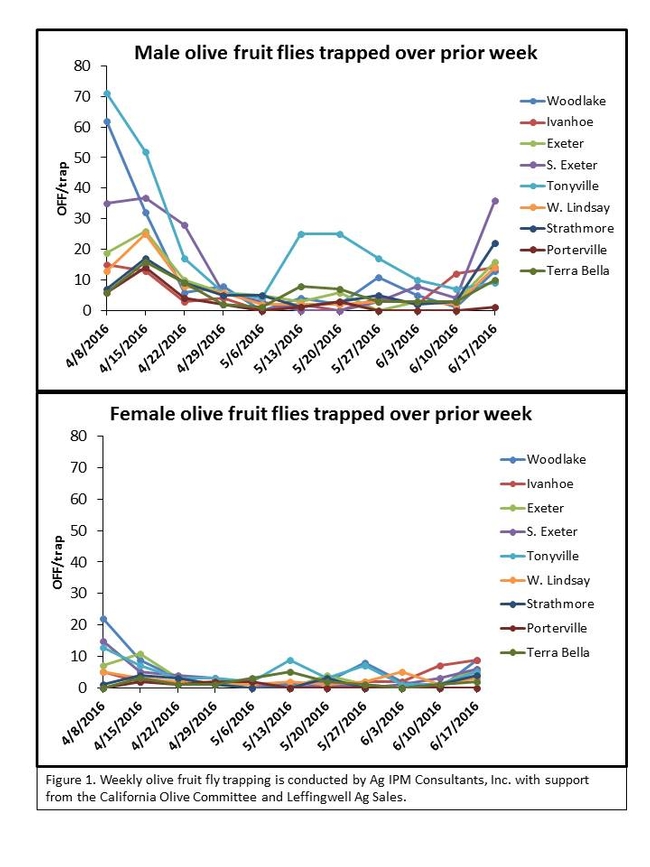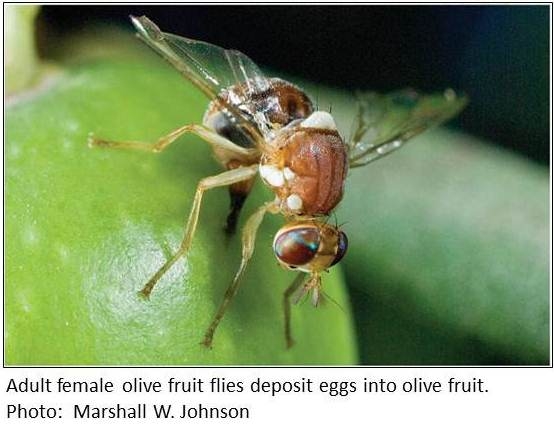Jim Stewart, Ag IPM Consultants, Inc., provides weekly counts of olive fruit flies (OFF) trapped in Tulare County, CA. Trap catches were relatively high April 1-April 8, 2016, which was the first trapping interval of the season. Traps maintained in Tonyville, Woodlake, and S. Exeter exhibited the highest trap catches of all locations monitored. Female OFF were less prevalent in traps than males, presumably because males are actively searching for females that arrive to lay eggs in fruit. In the San Joaquin Valley, damaging levels of infestation can occur within six days of oviposition, as the eggs quickly hatch into tunneling larvae that feed inside the fruit.
High temperatures can have a rapid and dramatic effect on OFF populations, especially when daytime temperatures reach 95° F. Successive days at and above this temperature causes substantial mortality of OFF adults, as well as developing larvae and eggs inside the fruit. Also at and above this temperature, egg-laying drops off dramatically by surviving females. For these reasons the pest tends to be more abundant in cooler California climates, such as the Sacramento Valley and along the Pacific coast.
Inland OFF populations generally decline during the summer and resurge as temperatures cool down in the fall. When olives reach about 10 mm in length, typically around pit hardening stage in early July, the fruit are mature enough to promote larval growth and development. Until pit hardening, OFF larvae are unable to survive in the fruit. Olive shotberries are typically not appealing for oviposition, as they are too small to support developing larvae. Intermittent and well-timed heatwave events, such as those experienced lately in the southern San Joaquin Valley, could benefit growers battling the fly as the race to harvest approaches.
Longevity and survival of adult female OFF increases in orchards where water and sugar sources are available. For example, flood-irrigated orchards may be more conducive to OFF survival than orchards on microsprinklers. Similarly, orchards with heavy black scale infestation may promote OFF survival because the sugar in honeydew secretions provides a food source for the OFF. Thus, management of water and sugar in an orchard helps to manage OFF populations. For more information on management of OFF, visit the UC IPM Online website: http://www.ipm.ucdavis.edu/PMG/r583301311.html
Reviewed by: Marshall Johnson

